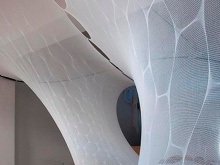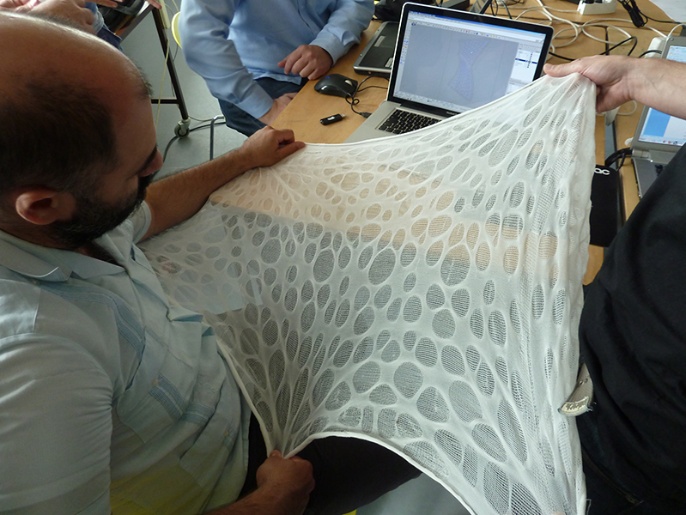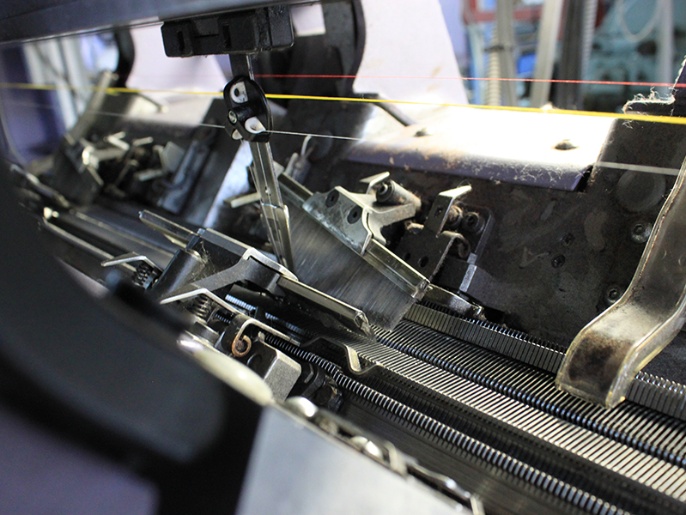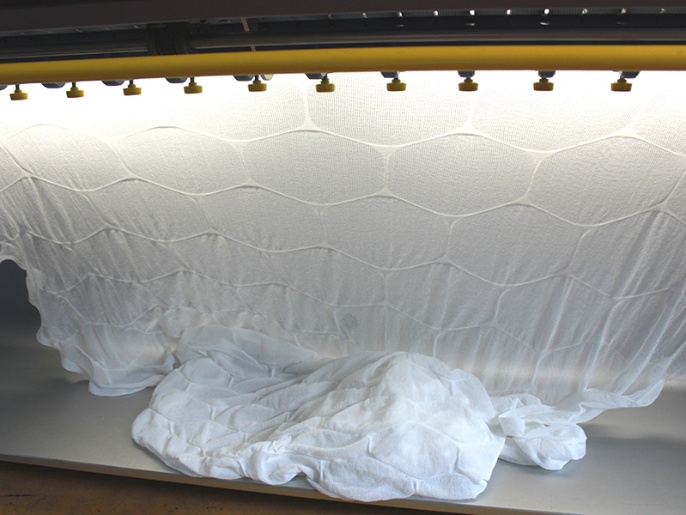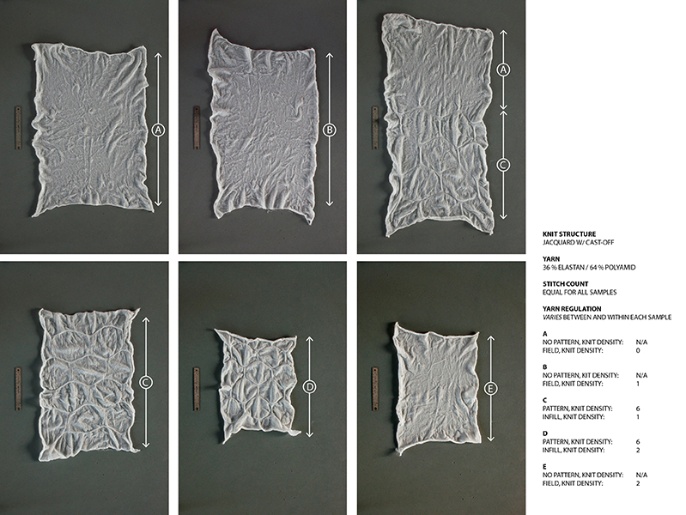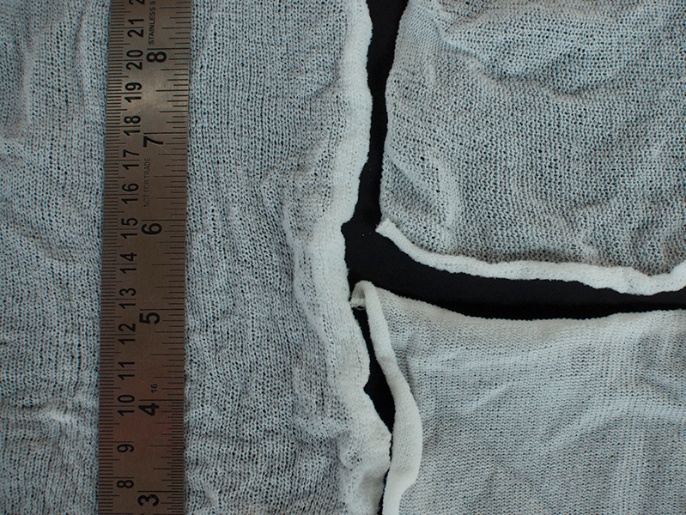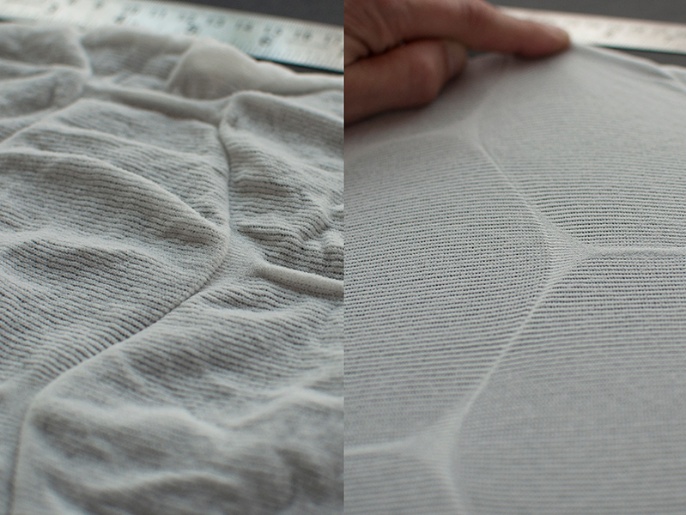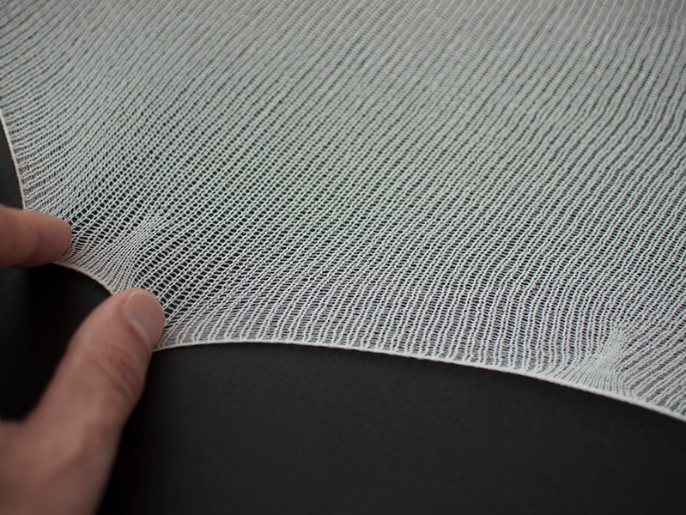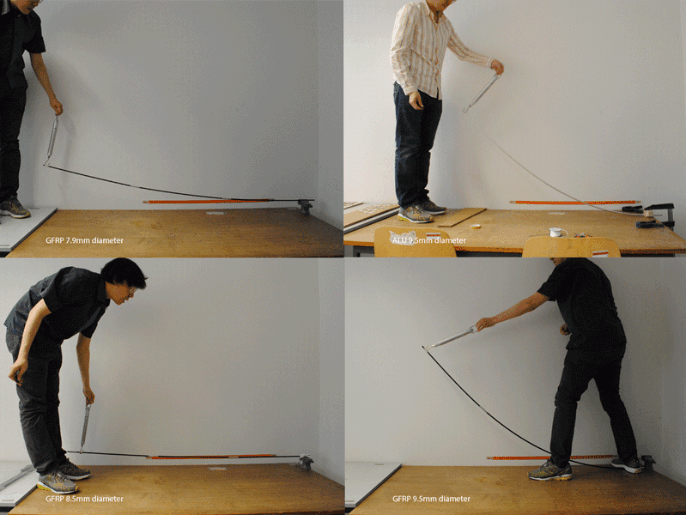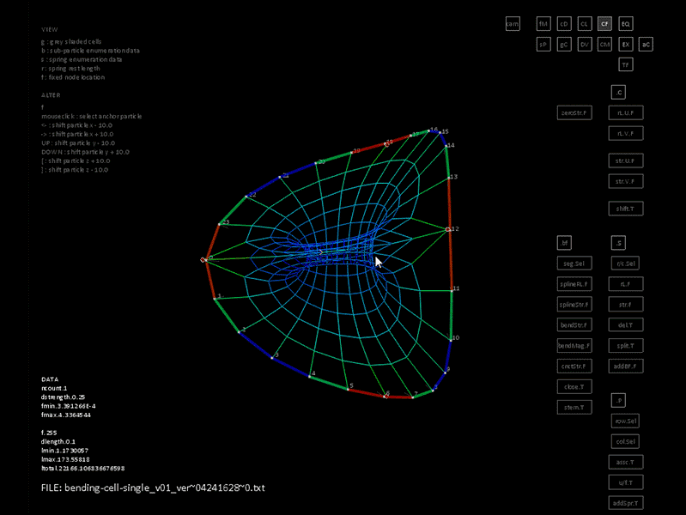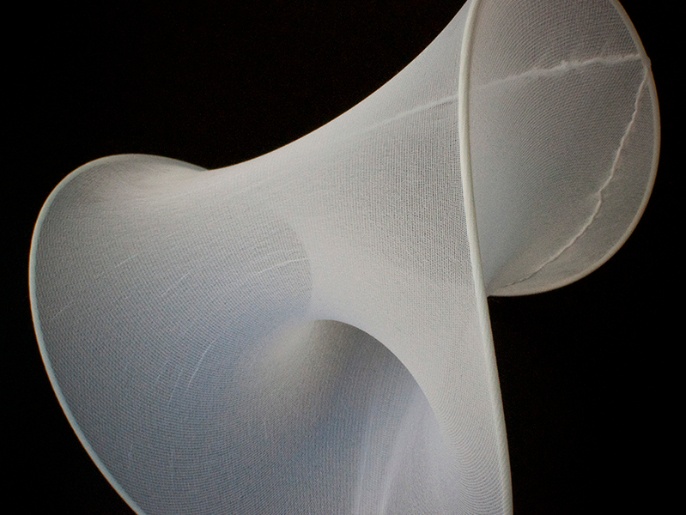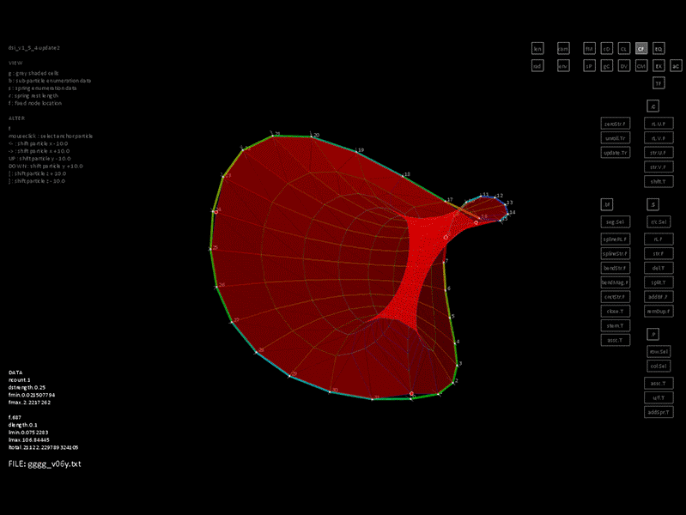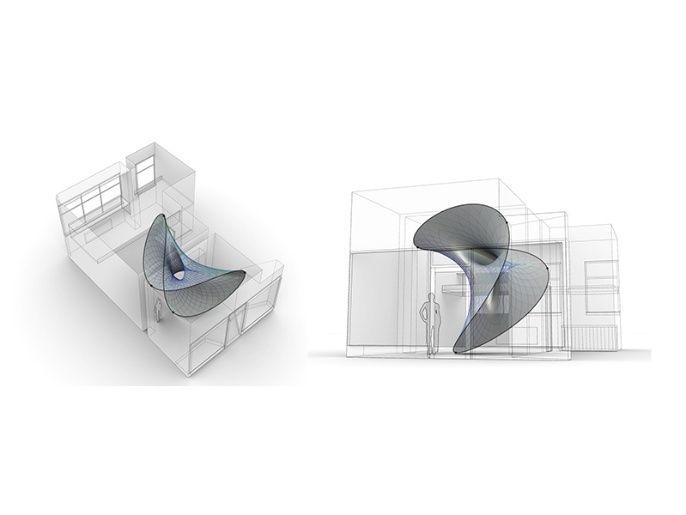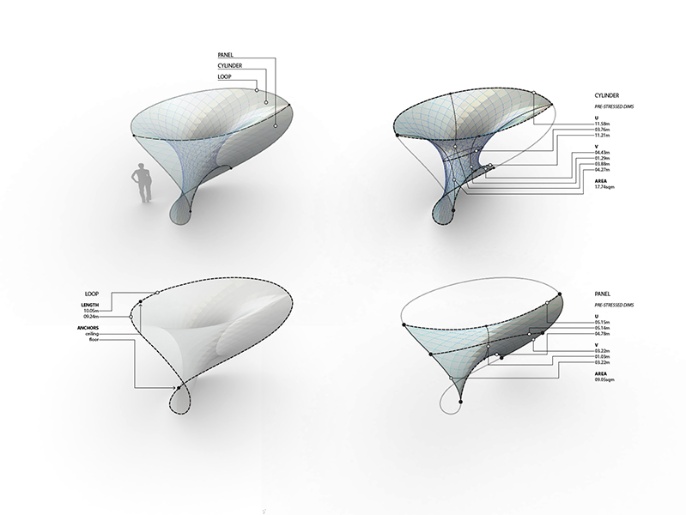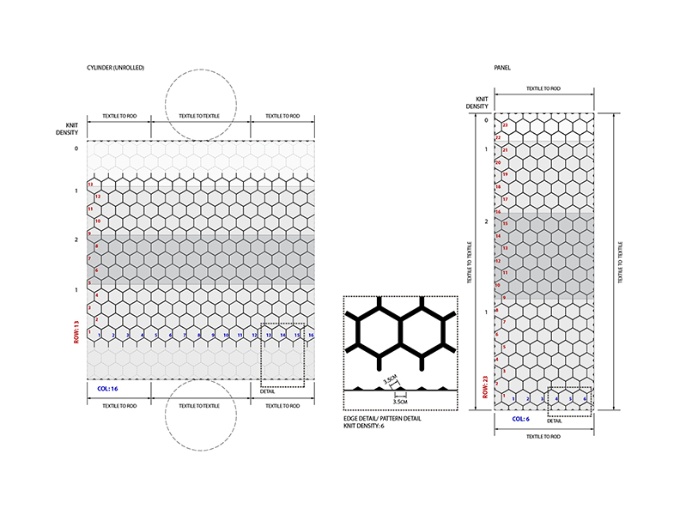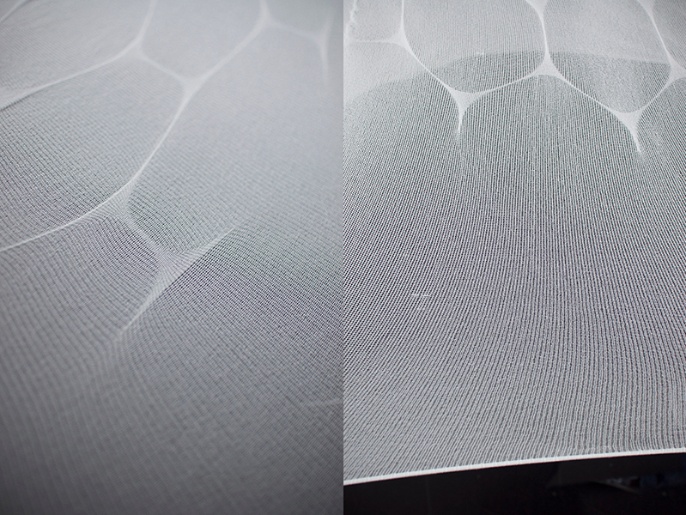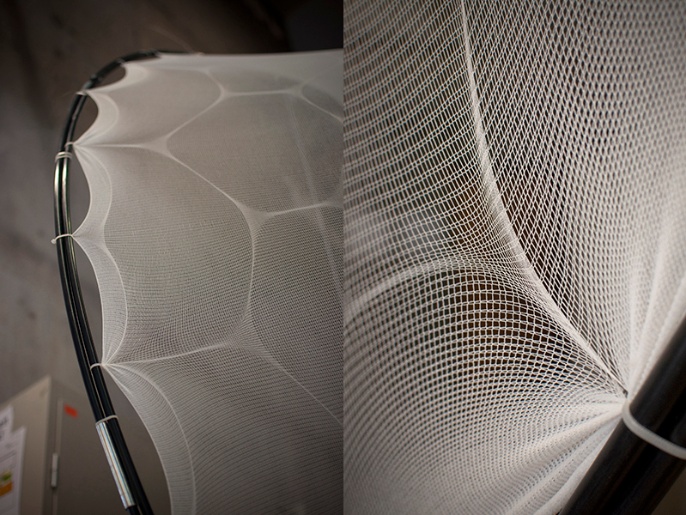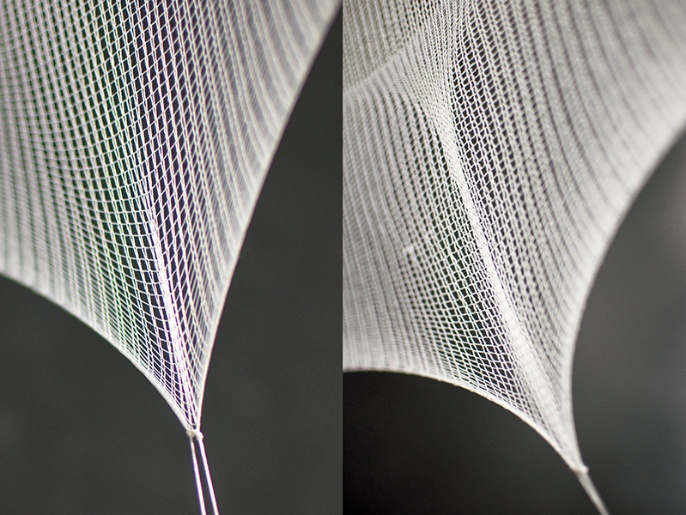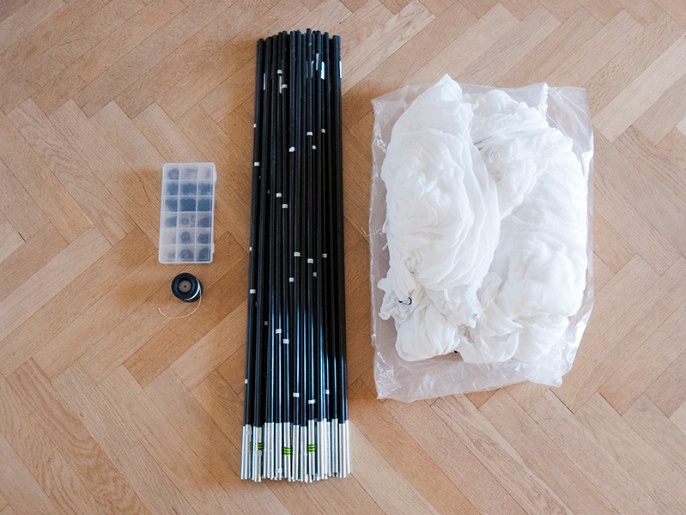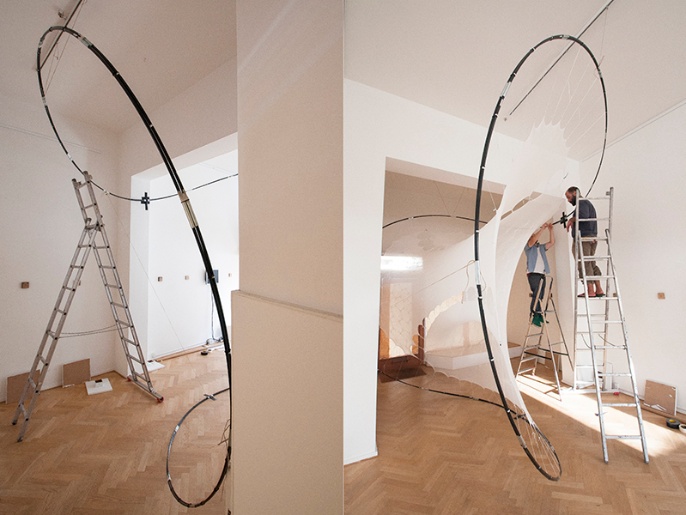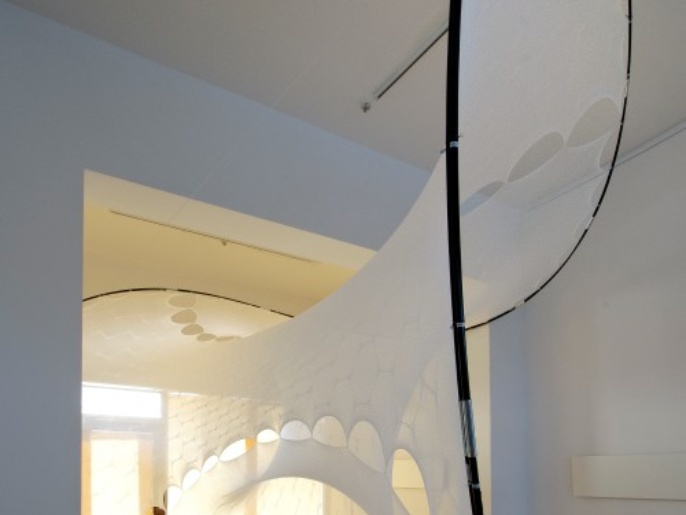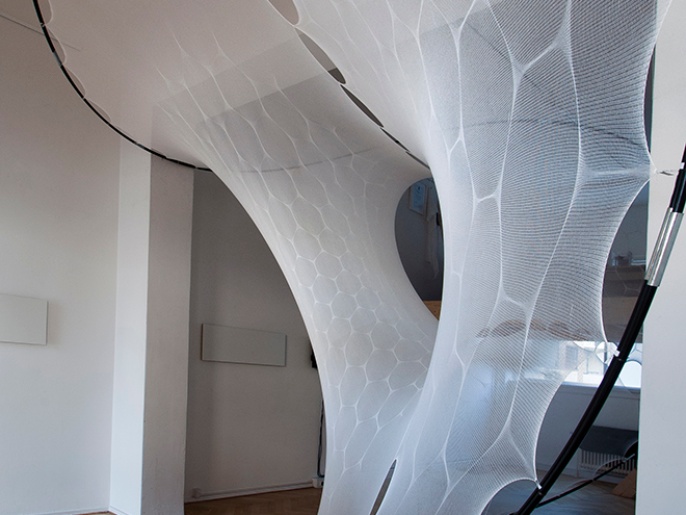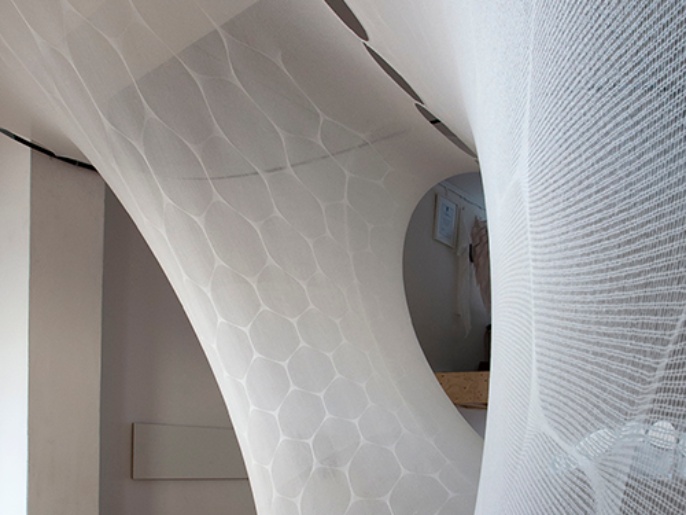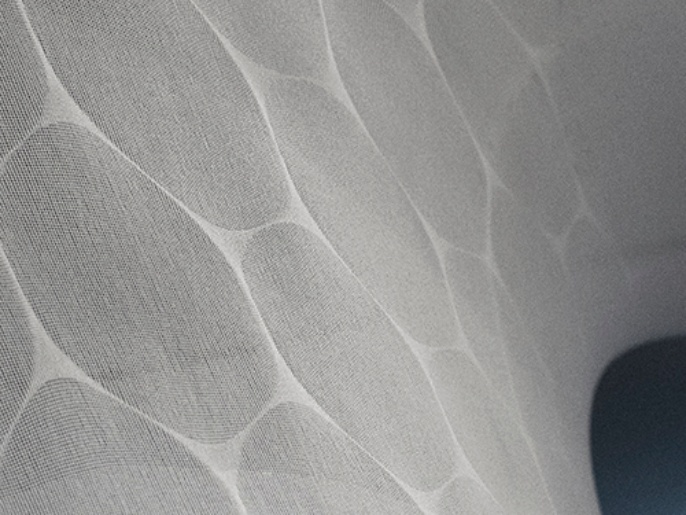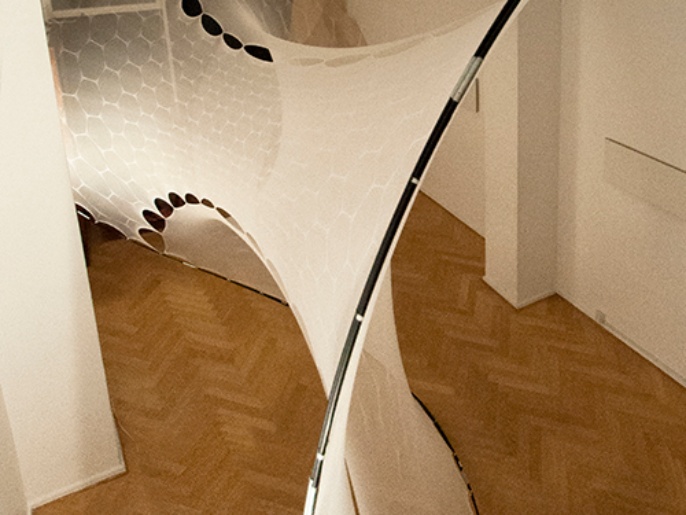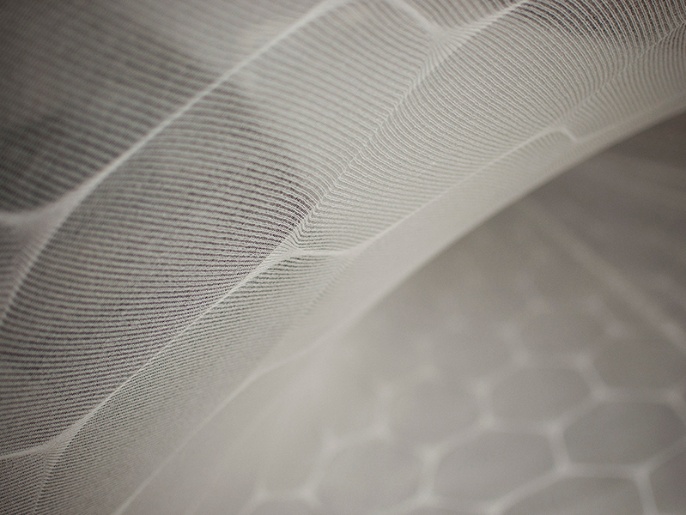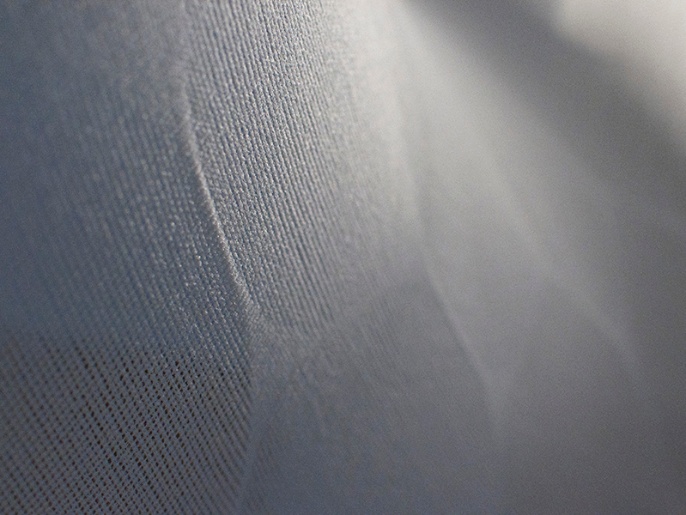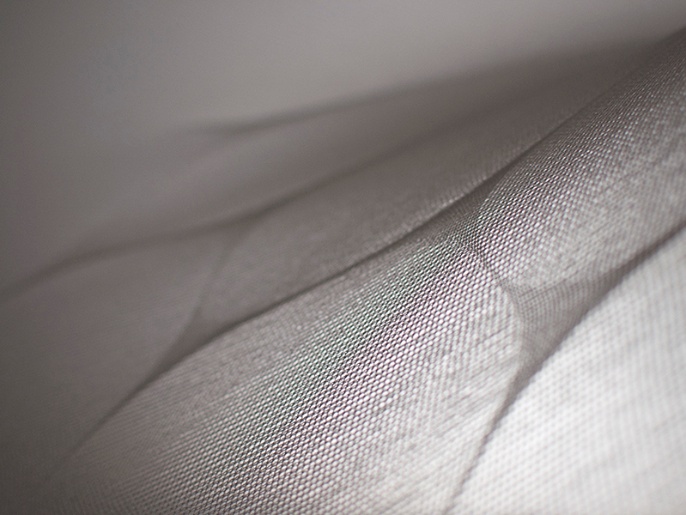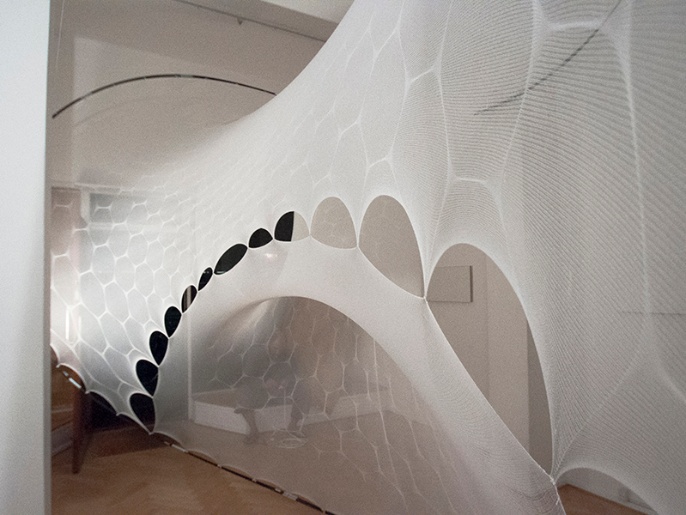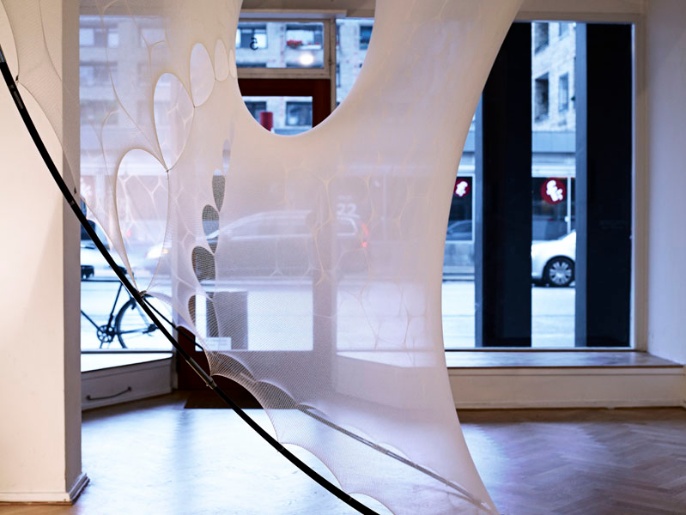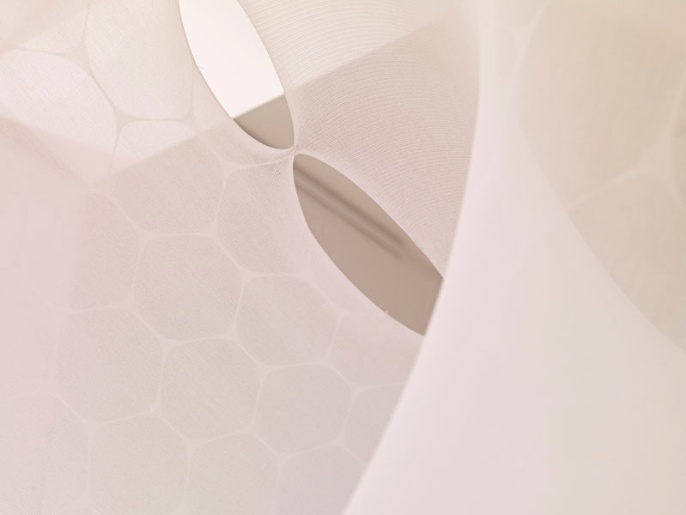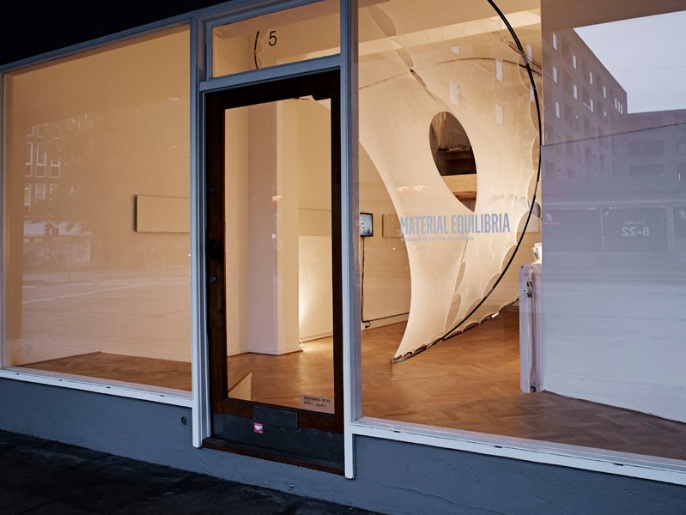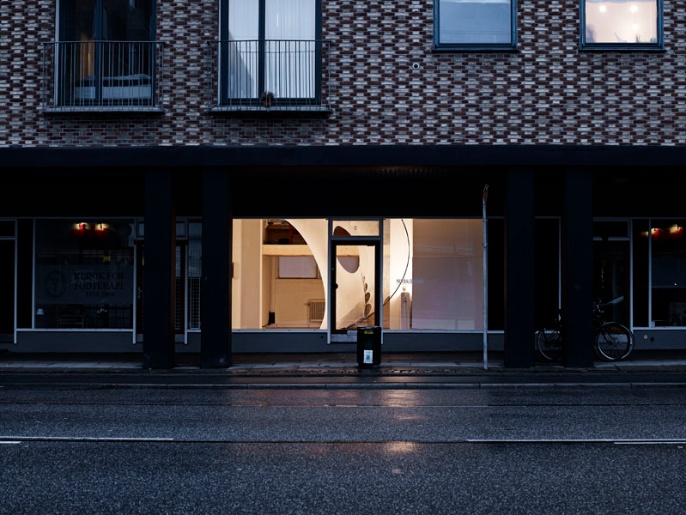MATERIAL EQUILIBRIA: Installation at ggggallery in Copenhagen, Denmark
This installation, entitled MATERIAL EQUILIBRIA, exhibits research by Sean Ahlquist on the delicate and simultaneous relationship of articulated material behavior and differentiated structural form. This specific study investigates the variegation of knitted textiles, a jacquard weave of shifting densities, as it influences the structuring of a tensile spatial surface. Through means of computer-controlled manufacturing, the micro-structure of the knitted textile is varied in order to induce and direct differentiated tensile behaviors across the meso-scale surface. A spring-based modeling environment, programmed in Processing and developed through the on-going research of Sean Ahlquist, is utilized to manipulate the behaviors and equilibria between tensile surface and bending-active boundary. The relative values of the computational data-set is translated to specific parameters defining ranges and regions of knit density, as well as stiffness of bounding glass-fiber rods. The resulting material form actively exhibits integrated force-driven behaviors in the expression, the distension, of the interwoven fibers.
The textile is constructed of a repetitive knit logic, a jacquard structure with cast-off allowing for sudden shifts in knit density. Additionally, the pre-stress, as referred to as regulation in the yarn, a combination of 36% elastan and 64% polyamid, is varied as it is fed into the CNC knitting machine, inducing an internal structuring to the textile. This variation generates areas of very little stiffness and great elasticity to regions where the internal pre-stress provides structuring and stiffness within itself. This is coordinated with areas in the overall form where the bounding loop, a double set of 11mm glass-fiber reinforced polymer (GFRP) rod, imposes different degrees of direct and indirect stress. The elasticity is also calibrated to enable the 27sqm surface, when stressed, is accomplished from only 2 continuous textile parts. The calibration of these material and morphological parameters allows for the form to rely only on two fixed points (at the floor and at the large doorway between the front and back gallery spaces) to find a self-stabilized equilibrium state.
The relationships between the textile and elastically deform-able bending rod are explored through empirical physical testing and approximated computational simulation. The spring-based modeling environment in Processing provides relative values between the two material components, while simultaneously allowing for manipulation of their relationships and degrees of influence to each other. The textile is simulated with a tensile spring mesh. The boundary elements are simulated by springs whose nodes (particles) embed forces arranged in a manner which imposes bending resistance. Through the comparative study of physical and computational data-sets, a method of translation is derived to dictate the specifications of the bending rods and the variation/patterning of the knitting densities for the textile. With a close coordination between the real and virtual the entire form is designed to be accomplished of only two textiles, a cylinder manufactured as one continuous element, and a 4-sided panel.
Overall, the installation exhibits the use of differentiated intensities in structural force to arrange the overall geometry (of a toroidal topology) and the description of surface (in a regular hexagonal pattern). Critical to this resulting form is the matrix of relationships between various subtle and sudden shifts in knitting densities and yarn pre-stress. Instrumentalizing the material parameters which underlie the matrix allows for the large geometry to be realized of only two continuous textile elements, while specifying large degrees of variation to deal with localized varying stresses, such as at edge conditions and internal areas of minimal bi-directional stress.
The installation is being exhibited at the ggggallery in Copenhagen, Denmark, from 17 August to 31 October. The installation and Ahlquist's doctoral research will be exhibited at the Faculty of Architecture, K1 building, in Stuttgart from 17 - 27 January 2013.
Scientific Development
Sean Ahlquist
Prof. Achim Menges
Research Assistant for Installation
Bum Suk Ko
Collaborators
Ali Tabatbai, ggggallery
Bettina Woerner, Walter Wörner GmbH & Co KG
Helene Jensen, Designskolen Kolding
Vibeke Riisberg, Designskolen Kolding
Mette Ramsgard Thomsen, CITA, The Royal Danish Academy of Fine Arts
Funding
ggggallery copenhagen
Institute for Computational Design, University of Stuttgart


